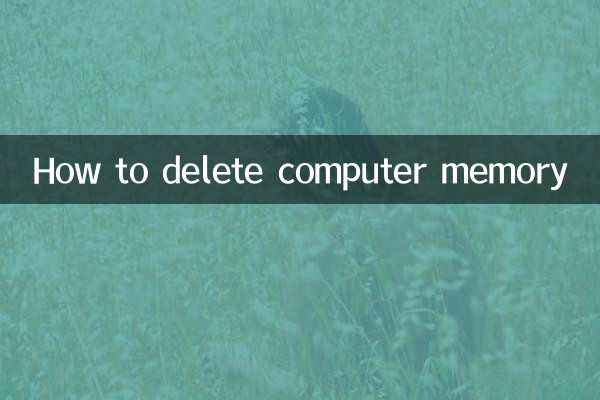How to delete computer memory: A practical guide to freeing up space to improve performance
In the digital age, insufficient computer memory is a common problem that bothers many users. Whether running large software, storing files or browsing web pages, insufficient memory will cause system lag or even crash. This article will introduce you in detail how to effectively delete computer memory, free up space and improve performance.
1. Understand the type of computer memory

There are two main types of computer memory:RAM (Random Access Memory)andStorage memory (such as hard disk or SSD). RAM is temporary storage, used to run programs, while storage memory is permanent storage, used to save files. This article focuses on how to clean up storage memory.
| Memory type | Function | Cleaning method |
|---|---|---|
| RAM | Temporarily store running programs and data | Close the background program and restart the computer |
| Storage memory (hard disk/SSD) | Permanent storage of files, applications and system data | Delete useless files, clean cache, uninstall programs |
2. Steps to clean the storage memory
Here are the specific steps to clean up the memory of your computer to help you quickly free up space:
1. Delete useless files and large files
Scan and delete temporary files, download useless files in folders, and duplicate files through File Explorer or third-party tools such as CCleaner.
| File Type | Common locations | Cleaning suggestions |
|---|---|---|
| Temporary documents | C: WindowsTemp | Can be deleted directly |
| Download the file | C:Users usernameDownloads | Keep important files, delete the rest |
| Duplicate files | Spread in various folders | Use the tool to scan and delete |
2. Uninstall infrequently used programs
Uninstall applications that have not been used for a long time through Apps and Features in Control Panel or in Settings.
| operating system | Uninstall path |
|---|---|
| Windows | Control Panel > Programs > Uninstall Programs |
| macOS | Application Folder > Drag to Trash |
3. Clean up the system cache
System caches will take up a lot of space, and regular cleaning can significantly free up memory.
| Cache Type | Cleaning method |
|---|---|
| Browser cache | Browser Settings > Clear browsing data |
| System cache | Use Disk Cleanup Tool (Windows) or Terminal Commands (macOS) |
4. Use cloud storage or external hard disk
Transfer infrequently used files to cloud storage (such as Google Drive, OneDrive) or external hard drives to reduce local storage pressure.
3. Tips to prevent insufficient memory
1.Regular cleaning: Clean useless files and caches at least once a month.
2.Enable storage awareness(Windows): Automatically clean temporary files.
3.Monitor storage space: Use a tool such as TreeSize to see which files take up the most space.
4. Related topics
Recently, with the update of Windows 11 and the release of macOS Sonoma, system optimization and memory management have become hot topics of discussion. Many users report that new systems have higher memory demands, so cleaning up becomes more important.
Summarize
Through the above methods, you can effectively delete useless files in computer memory, free up space and improve system performance. Regular maintenance and cleaning are the key to keeping your computer running efficiently!

check the details

check the details